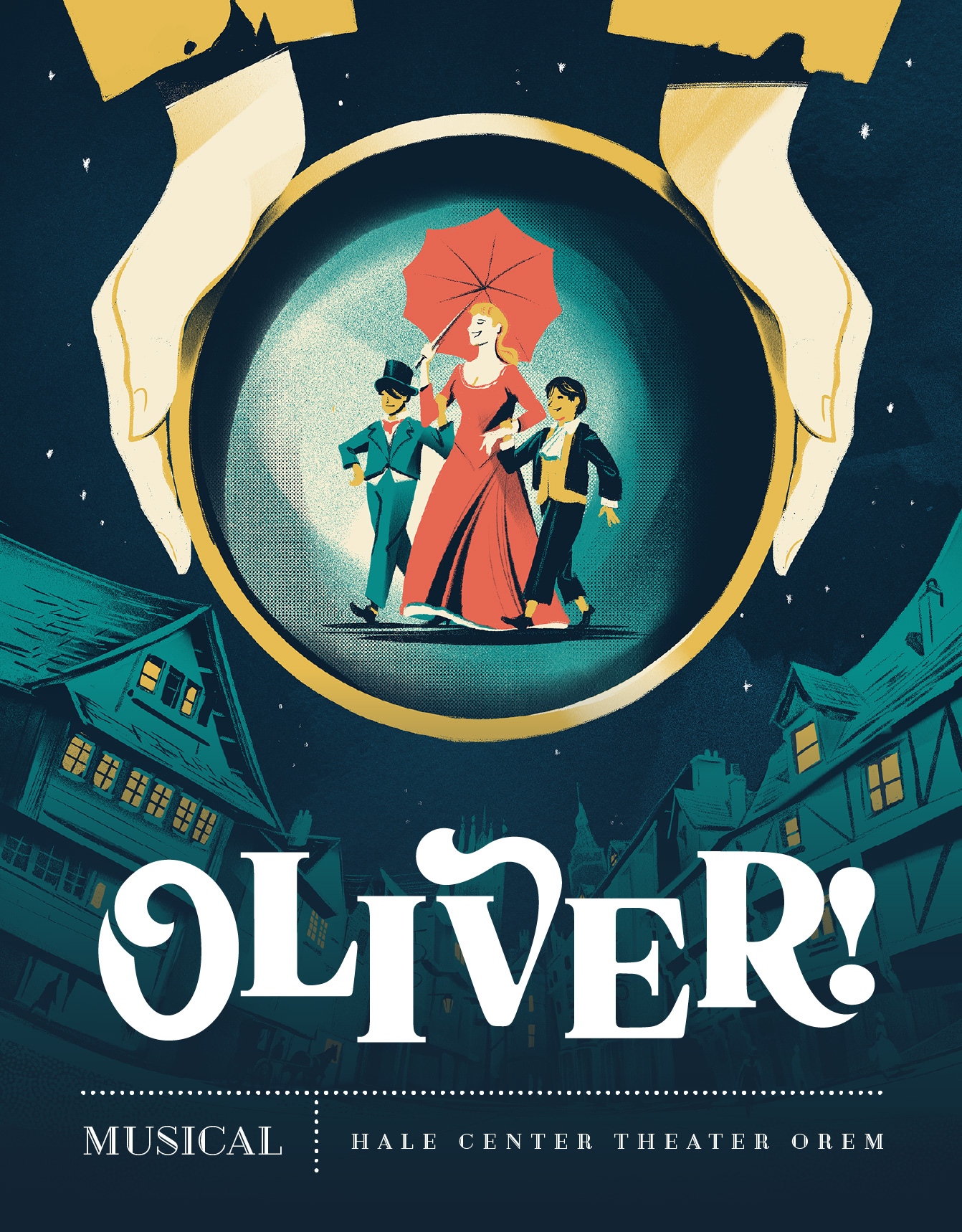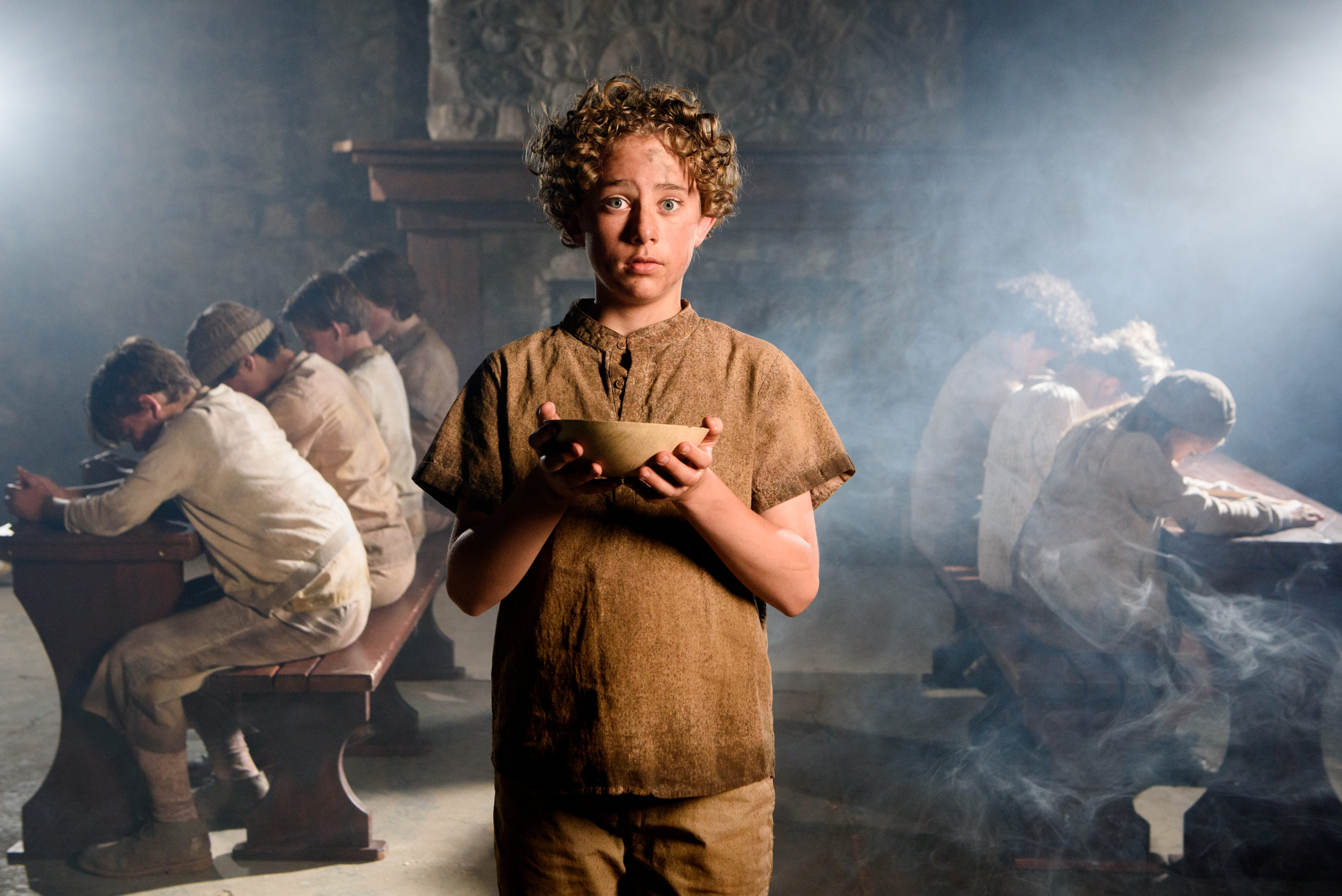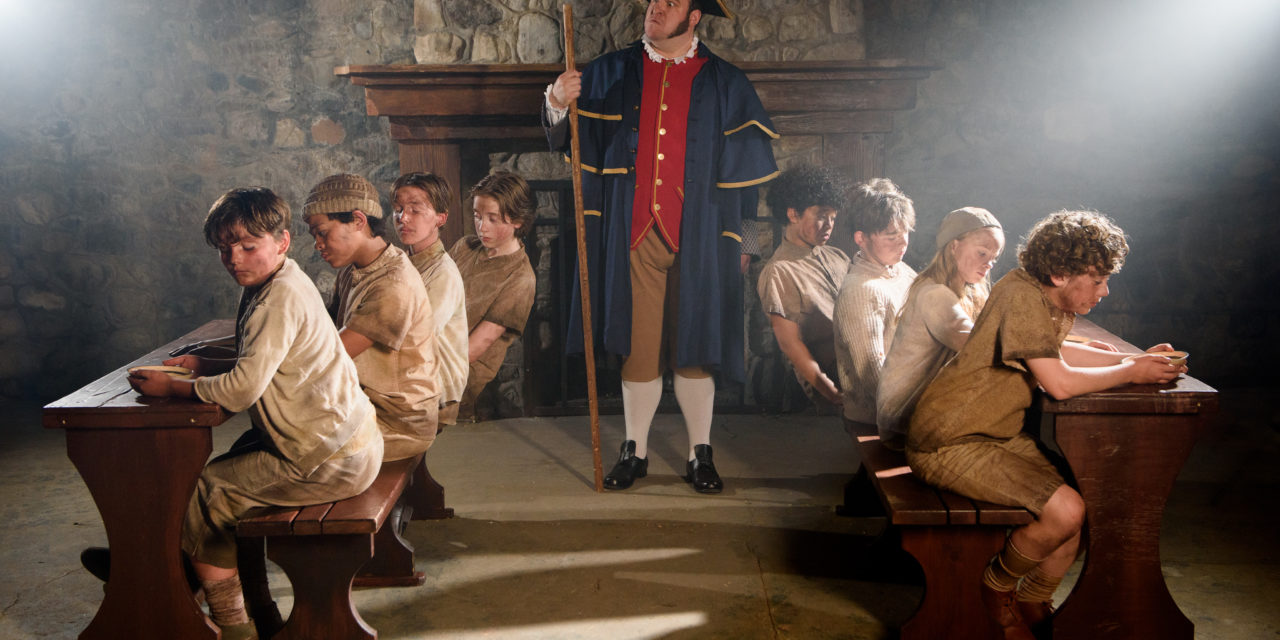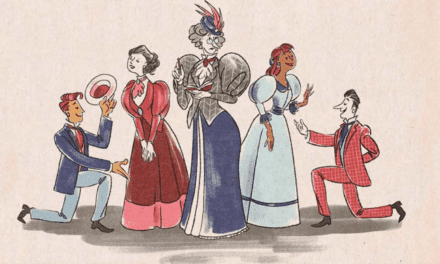OREM — The best way to experience the work of Charles Dickens is in adaptations. By modern standards, most of Dickens’s novels are excessively wordy and overflow with superfluous subplots and characters. When his stories are transferred to the stage or screen, the fat is cut away, leaving the focus on a compelling story. Oliver Twist is a good example of this tendency; when adapted to the stage as Oliver!, the sprawling 500-page book becomes a beloved musical that lasts two hours (not counting intermission). Currently, audiences can see Oliver! at Hale Center Theater Orem in a nice production that features a talented cast and a classic score.

Show closes August 5, 2023.
With Oliver!, Lionel Bart became one of the few artists to ever write the script, music, and lyrics for the same musical. Bart had written music and lyrics before, but Oliver! was his first script. And it shows. The play leans too heavily on Dickens’s plot, and the character development is weak, even by musical theatre standards. The dialogue also transitions into song abruptly at times (like the beginning of “That’s Your Funeral” and “It’s a Fine Life”), which makes it startling when an actor starts to sing.
Director Ashley Gardner Carlson solved most of these problems, and she has crafted an production that entertains. Carlson often loads Oliver! with little surprises whenever she can, such as some Fosse-inspired dancing in “Consider Yourself” and some fun pickpocketing staging during “You’ve Got to Pick a Pocket or Two.” Where Carlson excels is in establishing mood — like in the ominous first appearance of Bill Sikes, or the refreshing, bright mood of “Who Will Buy?” I also admire Carlson greatly for her staging of reprises. For example, the “It’s a Fine Life” reprise is full of tension and dynamic blocking as the characters navigate one another’s anger and fear. Seeing this level of talent and creativity in a director does make it disappointing to see Carlson reuse blocking and images from the film, though.
Playing Nancy, Riley Branning Squire gets the only nuanced character in the play, and she takes full advantage of it. Riley Branning Squire gives an Equity-level performance, loading up “As Long as He Needs Me” with power and emotion that lays bare Nancy’s vulnerabilities and determination. Nancy is a woman trapped in an abusive relationship, and Riley Branning Squire shows the audience how a resourceful woman can find herself in that situation. Riley Branning Squire injects life and energy into her scenes, and no one can resist her vivacious performances of “Oom-Pah-Pah” and “It’s a Fine Life.” Beyond her singing performances, I loved how Riley Branning Squire makes a genuine connection between Nancy and the other characters; at various times, Nancy comforts street children, calms her abusive partner, and loves life.
I was absolutely charmed by Stephen Kerr‘s performance as Fagin. In Kerr’s portrayal, Fagin revels in his little criminal fiefdom that he has built, especially during “Be Back Soon,” where he joyously leads a parade of pickpocketing children. Beneath the cheeriness, though, are decades of a hard living and disappointment, which Kerr shows as Fagin admires his treasures. I am also pleased to report that there is no trace of anti-Semitism in Kerr’s performance (an issue that has plagued the character since Dickens created him).

John Wakley as Oliver Twist. Photo by Suzy O Photography.
Stiveni “Boogie” Iongi plays the Artful Dodger and exudes confidence, making him a natural leader among the children. Iongi is engaging during “Consider Yourself,” and I enjoyed how Dodger took Oliver (played by John Wakley) under his wing and tried to protect him from Bill’s temper. The script does not give much Jacob Squire to do as he plays Bill Sikes. But with his scarce stage time, he is suitably ominous as the play’s villain.
Dennis Wright designed costumes for Oliver!, and the distressed and dirtied costumes for the orphans, criminals, and other members of the British urban underclass were realistic reminders of the dire condition of these people’s lives. Even the peppy songs in the score could not distract from the grittiness of the era, thanks to Wright’s costumes. Wright has an understanding that costuming adds to a character’s backstory, and I appreciated how Fagin’s and Dodger’s costumes were a mix of shabby and refined items. The implication was that some of their clothing had been stolen or found — perfect for two master thieves.
Morgan Golightly had the greatest technical challenge in designing a set for Oliver! that could fit on the small stage at Hale Center Theater Orem. The play takes place in a variety of locations, and the set relies a lot on the audience’s ability to imagine a location. The wooden scaffold-like set is not particularly evocative of a workhouse, an upper-class home, a London street, or many of the other locations of the play’s action. The set had two levels, with the floor top level only about four and a half feet above the ground. This meant that actors had to duck to avoid the top level of the stage if they used the upstage center entrance. Unfortunately, one actor entering the stage during a song bumped his head during the second act. I hope that this hazard does not cause any more injuries during the run of the show.
The second level of the set, while used in other scenes, was required for the bridge scene in the second act. This scene is poorly written with clunky dialogue and a confusing series of entrances and exits, and Carlson’s staging did not overcome the scene’s flaws. Some important details were rushed (such as the fate of Fagin’s treasures), and my son accompanying me did not understand how Bill’s cries of “Nancy!” related to the action.
Nevertheless, Oliver! works better on the Hale Center Theater Orem stage than it does in most productions. The delightful performances from the cast, smart costuming, and toe-tapping score combine to make Hale Center Theater Orem’s Oliver! a strong show. Anyone who sees Oliver! will have “a fine life” for a few hours.

This review was supported by a generous grant from the Orem CARE program.





